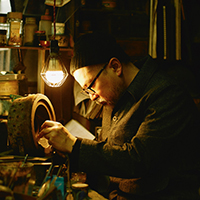砂鉄鶴亀紋羽広形鉄瓶
- Metalwork
- Presented in 2024
- Contact for Price
| Category | Metalwork |
|---|---|
| Year Presented | 2024 |
| Artist Signature | Signature on box and piece |
| Notes | Comes with box |
Morihisa Suzuki

16th generation of the Suzuki Morihisa Studio, a Nambu ironware studio founded in 1625 as purveying metal caster to the former Nambu clan. With my experience as a graphic designer, I produces mainly iron kettles and tea kettles of both classic and modern designs.

